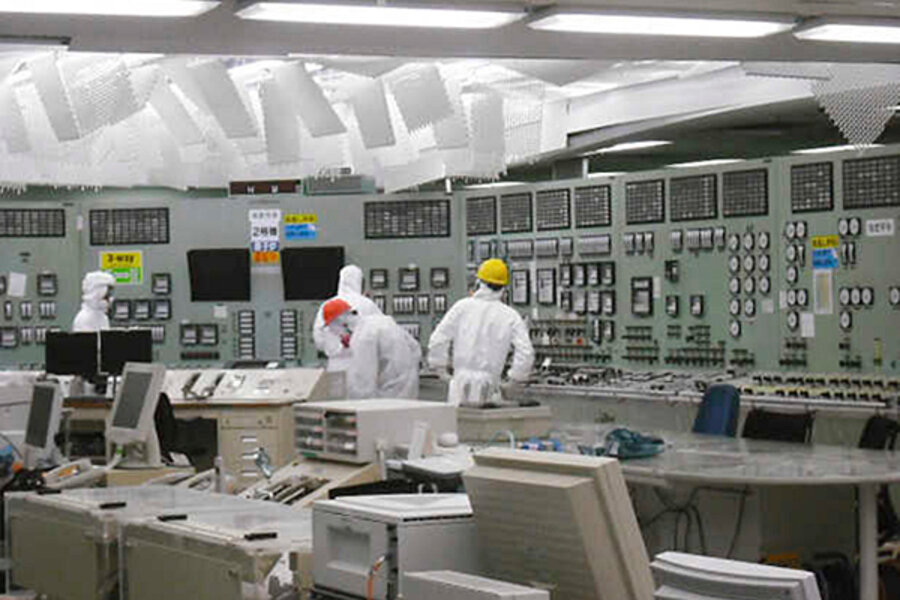Japan nuclear mystery: Where are pools of radioactive water coming from?
Loading...
| Washington
Over the last two days workers at the Fukushima Daiichi nuclear plant have discovered numerous pools of radioactive water in reactor turbine buildings and maintenance trenches. This contamination has given Japanese officials yet another tough problem to deal with as they struggle to bring the crippled complex back under control.
The radioactive water in these pools also poses a mystery: Where is it coming from?
“It is difficult from the data we have seen to determine how that water got into those locations,” said David Lochbaum, director of the Nuclear Safety Project at the Union of Concerned Scientists, at a Monday briefing for reporters.
Radioactive water first arose as a crucial issue last week when three workers in the basement of Reactor Unit 3 unknowingly stepped into a contaminated pool. Water sloshed over their boots and set off their personal radiation alarms. All three were taken to a hospital for observation. Japanese authorities said Monday they had been released.
Over the weekend Japanese authorities discovered similar pools of radioactive water in Reactor Unit 2. On Monday, Tokyo Electric Power (TEPCO) officials announced that they had found more contaminated water in deep trenches used for pipes and wires outside three reactor units.
The radioactivity associated with the water is about four times the level that is safe for workers, according to TEPCO. Thus the presence of the pools is making it much more difficult for workers to proceed with laying electric cables to reconnect pumps and other critical equipment.
Japanese nuclear safety authorities say they assume that the source of the radioactivity in the water is damaged fuel in reactor vessels. The question is what pathway that radiation is following to leak outside reactor containment vessels.
One possibility is that there are breaches in reactor vessels themselves. In recent days pressure readings within those vessels have remained generally steady, which would indicate that they remain largely intact. However, TEPCO has noted that there has been enough variation in pressure and temperature readings to raise the possibility of a leak in some part of the system.
Over the course of the Fukushima nuclear crisis workers have vented hydrogen gas from reactor vessels in an attempt to keep pressure under control. If such venting occurred after fuel rods had been damaged, escaping steam could have been radioactive. It would have condensed into water, fallen in droplets, and mixed with seawater sprayed by fire trucks to form the radioactive pools.
“This is an indication that even when you don’t have a sign of a breach of a reactor vessel and containment there is still enough radioactivity in the effluent to cause this localized problem,” said Edward Lyman, a senior scientist at the Union of Concerned Scientists.
Workers at the plant now face the problem of both pumping out contaminated water from areas of the Fukushima plant and pumping in water to cool the fuel rods in reactor vessels and spent fuel pools.
Hidehiko Nishiyama, a spokesman for Japan’s Nuclear and Industrial Safety Agency, called striking the proper balance of water in versus water out “very delicate work,” according to the Associated Press.
He also said that workers have yet to find a safe place to store the radioactive water, though they are “exploring all means.”





